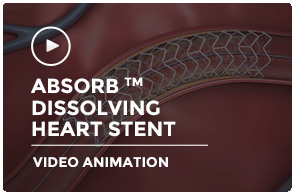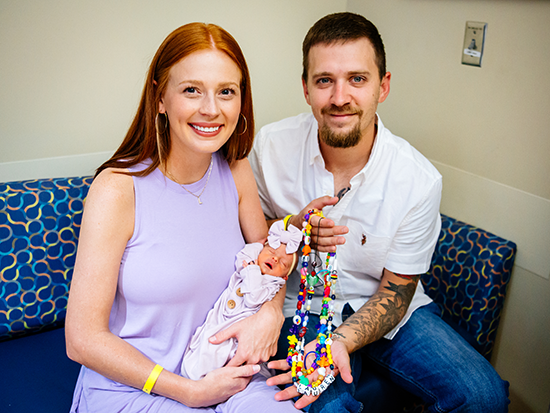A stent is a small mesh tube that is placed inside clogged arteries to keep them open and working. Arteries are blood vessels that carry blood from the heart to other parts of the body. Stents are normally made of metal, but dissolving heart stents are made of a natural material called polylactide, similar to what is used in dissolving stitches. Dissolving stents allow cardiologists to treat a greater variety of patients with heart artery blockages. Because stents are generally no longer needed once normal blood flow is restored, dissolving stents may be safer than metal stents in the long term.
Like traditional stents, dissolving heart stents are normally placed into the artery using a thin, flexible tube (called a catheter) with a balloon on the end. The stent is then expanded into place by inflating the balloon, which pushes the stent against the artery wall to enable greater blood flow. The flexible tube and the balloon are removed after placing the stent. Both traditional and dissolving stents often contain medication that is slowly released over time to treat the diseased area of the artery where the stent was placed. Dissolving stents fully disappear within about three years.
In 2016, UAB became the first hospital in Alabama to implant a dissolving heart stent in a patient. Known as the Absorb bioresorbable vascular scaffold, the device is the world’s first FDA-approved dissolving heart stent. It represents a major advance in the treatment of coronary heart disease, which is responsible for some 370,000 deaths annually in the United States alone, according to the National Heart, Lung, and Blood Institute. Placement of the dissolving heart stent is handled by UAB Medicine’s Interventional Cardiology team, which underwent extensive training on the new device to ensure that it is implanted properly and used only for patients who meet certain criteria.
UAB Interventional Cardiology is an internationally recognized leader in cardiac services, combining compassionate, innovative patient care with the most advanced technology and basic and clinical research. The program makes use of catheterization, stenting, angioplasty, and other minimally invasive interventional treatments to unblock clogged arteries. Interventional Cardiology delivers both inpatient and outpatient care at UAB Hospital and at The Kirklin Clinic of UAB Hospital. Procedures are performed in the UAB Cardiovascular Institute, which is among the largest centers of its kind in the Southeast and one of the first to integrate multiple services, including not only interventional cardiology but also electrophysiology, neuro-interventional radiology, pediatric cardiology, and vascular interventional radiology.
Videos
Resources
Related Specialities
Clinical Trials
Speak to your physician about your options and browse the link below for more information
Latest News
View All News-
UAB researchers evaluate the efficacy of new cardiovascular disease risk equation in multiple studies
June 24, 2025
-
Voucher awards will accelerate spatial biology research
April 2, 2025
-
How to help children develop heart-healthy habits
February 27, 2025
-
“A blessing to be able to be here” — UAB employees provide fellow employee lifesaving care after cardiac arrest
February 11, 2025
-
Women’s heart health: Here is what you should know
February 3, 2025




